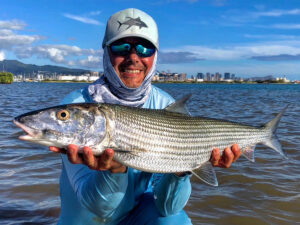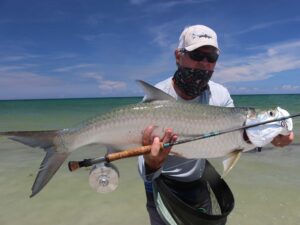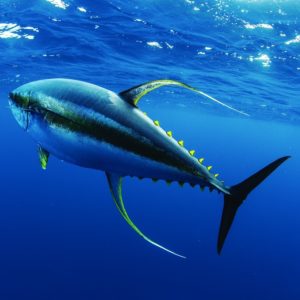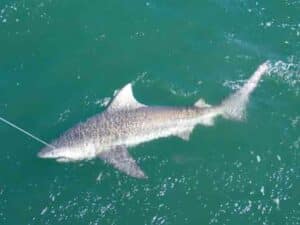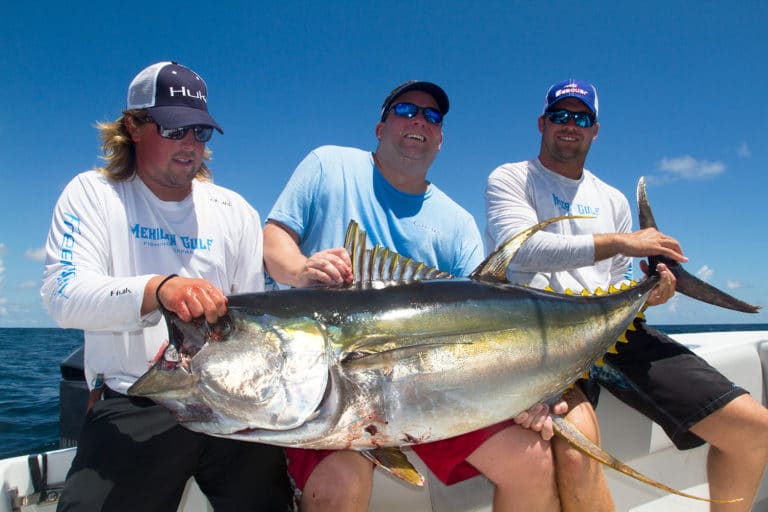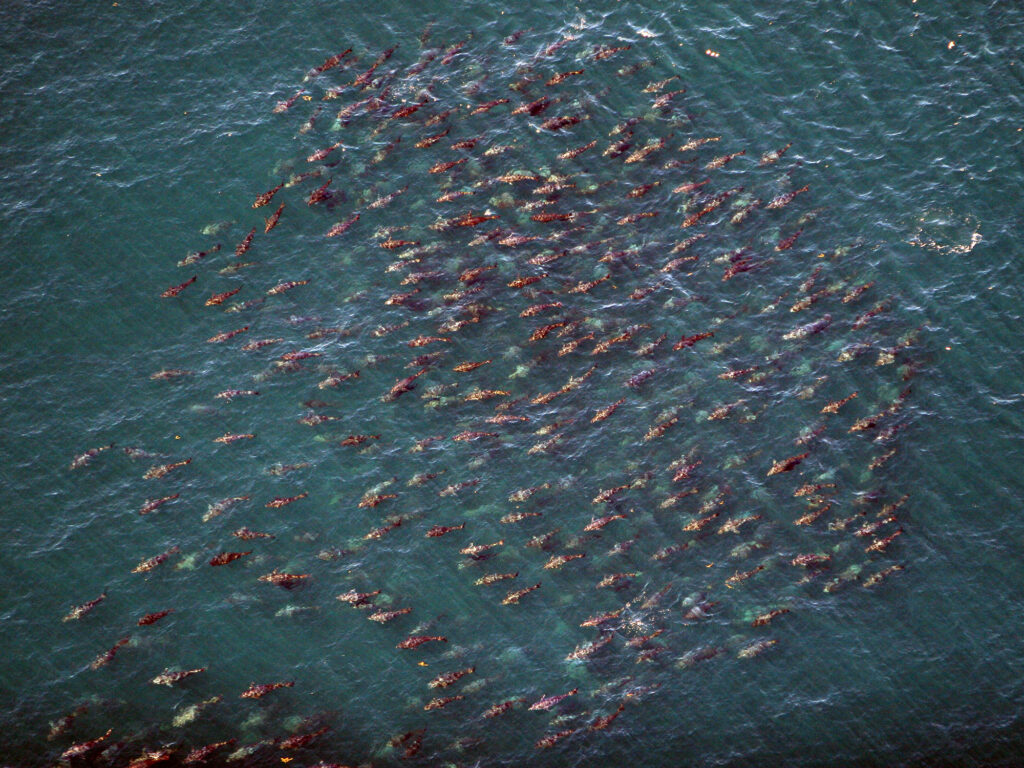
Fifteen years ago, Western Atlantic bluefin tuna stock assessments reported that total numbers of bluefin were down about 90 percent from 1970. The number of giant bluefin, estimated to be more than 1 million fish in 1960, was estimated to be about 100,000 fish, possibly half that number. At that time, some experts said that bluefin could be so reduced that they might need endangered species status. Today, the big tuna are back.
The current rebound in Western Atlantic bluefin stocks is one of the greatest fishery success stories of this century. From a point near depletion a decade ago, their stocks have improved to a level of sustainability that seemed unimaginable back then.
“For me,” says John Walter, “it’s one of those amazing career arcs to have started with bluefin tuna in 2007, at literally the worst point in bluefin tuna management, and now have this success.”
Walter is the Deputy Director for Science and Council Services at NOAA’s Southeast Fisheries Science Center and Chair of the Western Atlantic Bluefin Tuna Committee at the International Commission for the Conservation of Atlantic Tunas (ICCAT).
“Back then,” Walter says, “we were talking about endangered species listings for bluefin, CITES listings, a catastrophe in the global stocks. We have now turned the corner to where bluefin is so abundant that it’s a sustainable fishery and we’re recommending people to eat more bluefin.”
According to ICCAT estimates, three key metrics of the species’ sustainability have all improved in recent years: total biomass, recruitment, and fishing mortality as a percentage of the total stock.
Total Biomass Gains of Bluefin Tuna
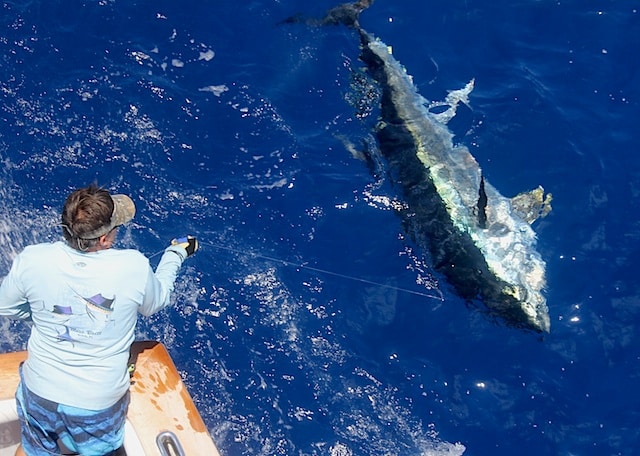
Total Biomass is an estimate of the size of the entire stock. For Atlantic bluefin, that includes a combination of both western and eastern Atlantic and Mediterranean stocks. The fish mix together in the Atlantic Ocean, and American fishermen catch a lot of eastern bluefins. That mixing of the stocks has been documented by satellite tagging and backed by genetic testing.
Prior to 2006, the fisheries were catching way above the eastern Atlantic quota. “We think that the catches may have been nearly double the quota,” says Walter. “Without the greatly improved reporting measures that we have today, it was much harder to track catches. Fisheries in the Mediterranean also targeted a lot of younger bluefin. That wasn’t very sustainable, nor did it achieve the yield that one can get from allowing the fish to grow.”
In response, ICCAT took dramatic action to lower catch quotas from a high of 32,000 metric tons (t) as late as 2006 down to 13,500 t in 2010. They also put in size limits to protect smaller fish. The fishery changed from focusing on small fish to targeting large fish fattened in open-ocean farms for the sushi market. Scientists estimate that the eastern population size is much larger than the western population, so what happens in the east deeply affects the western Atlantic populations.
Tuna Recruitment to the Stock Increases
Having stricter ICCAT regulations has played a big part in bluefin’s comeback.
“We talk about good and bad years of recruitment of fish to the stocks,” Walter says, “and 2003 was a really good year. Subsequently, there were other good years where we’ve seen strong year classes of fish born in the western and the eastern stocks. Concurrent with that, it seems that there have been favorable environmental factors that enabled those recruits to survive. U.S. fishermen are often the first ones to see these good year classes and they have been great at providing their knowledge and data.
“The most basic reason for the increase,” Walter says, “is that if you allow the fish to survive, grow, and spawn they’re going to make more babies. That’s the basic story here. It’s fisheries 101—stop catching them at age 2 and let them get big and fat out in the Atlantic where all the food is and let them come back at age 9 and spawn.”
According to recent ICCAT estimates, there was a big spike in the recruitment of fish to the stocks after 2015, with more fish surviving per year to spawning age, and it’s still on the increase.
Tuna Fishing Mortality Decreases
Fishing mortality is the fraction of the stock removed from the fishery. It’s a measure of the number of fish caught versus the entire stock, and it’s dropping, another indication that the stock is increasing.
“Mortality is about 8% to 10% of the total fish and that’s down from about double that figure—which was unsustainable,” says Walter. “Now we’re in a sustainable rate of removal, which means that the population is self-reproducing. That’s the goal. Now we need to fish them at ages that provide better fishing opportunities and the ability for the stock to reproduce.”
Bluefin’s Slope Sea Spawning Location
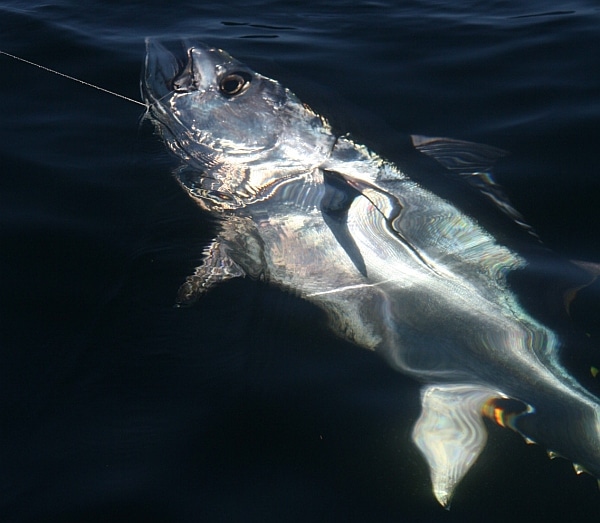
Along with the increased numbers of bluefin, recent documentation of another spawning area for Western Atlantic bluefin, in addition to the Upper Gulf of Mexico area, has researchers like Walter intrigued and curious. It’s called the Slope Sea spawning area, located about 100 miles offshore of Long Island, and both eastern and western fish spawn there. Researchers have collected eggs and larvae.
“We don’t necessarily think it’s a new location,” Walter says, “but when the populations were lower, perhaps we lost sight of it. Now that we have a larger population, we’re seeing the fish there. Recently we’ve received funding from Congress for a survey of that area that we’ll be doing in 2025, a dedicated scientific survey to document the importance of that area to collect larvae and spawning adults.”
There has been other good news, as well. Recently, the U.S. government implemented several measures that have dramatically reduced bluefin mortality, including requirements to use “weak” hooks that bend to allow spawning giants to go free on pelagic longlines in Gulf of Mexico waters and an individual bluefin quota program, which reduced bluefin tuna bycatch by 65% fleetwide. There’s also now incorporation of Ecosystem Reference Points in the management of menhaden, a primary forage fish for bluefin. That provision is a specific consideration to allow for predation of menhaden, essentially leaving more for bluefin to eat. All these factors combined mean good news for Atlantic bluefin and for the anglers who love them.

